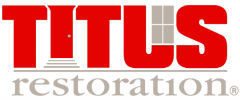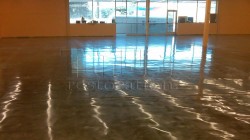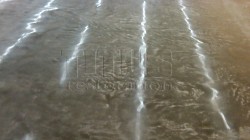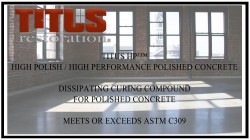Titus Curing Compound | Our Recommended Product for Curing Concrete to be Polished
Download : Data Sheet | MSDS
Before we can understand why the curing process is so crucial to a slab that is to be polished, we must first understand why many methods are not compatible with concrete polishing.
Contractors commonly use curing compounds that meet ASTM C309, but that may increase the cost of polishing and also usually compromise the results.
- Dissipating Curing Compound
- Concrete Turned Black
Some of these include:
- ASTM C309 Membrane Curing Compounds:
These materials can be extremely difficult to remove if over-applied, resulting in additional costs for their removal. The membrane creates a barrier to the concrete that concrete grinding tooling cannot remove. Often, removal requires strong chemical stripping agents in order to reach the concrete that is to be polished. In addtion, these curing compounds also have a tendency to darken the concrete floor.
- ASTM C309 Dissipating Curing Compounds:
Most manufacturers data sheets will state these materials require sunlight (UV exposure) to dissipate. Most manufacturers will state how long dissipation takes. Titus’ experience is that these dissipating curing compounds are often do not, in fact, dissipate resulting in additional costs for removal in order to properly polish the concrete. They can be over applied making removal even more difficult and also have a tendency to blacken the concrete.
- 3. No Curing
Titus finds that many contractors use no form of special curing for the concrete whatsoever. In these occasions, the concrete paste is quite soft and sand is lost from the concrete. This loss of sand is called micro pitting and dulls the shine of the concrete because the micro pits refract light rather than reflect light. These slabs end up with a spotty shine or require the application of a grout coat to fill the micro pitting. The loss of sand also causes unwanted scratches in the floor…sometimes quite visible…and thus they are harder to polish.
At Titus we have experienced that all the curing compounds that claim to be dissipating, in effect they have never been dissipated before the moment to polish. We have also experienced that many curing compounds turn the concrete paste to black due to over application, and that rolling after dissipating curing compound will leave roller marks, or that applying duct tape on a floor treated with curing compound will leave permanent marks, and also that when dip in the slab are present most of the grinder machines won’t remove the curing compound from the low spot.
So what are the preferred methods for curing concrete?
Almost all contractors agree that wet curing is the best, but it also has its limitations. Wet curing process requires from 7 to 14 days of keeping the concrete slab wet, either with blankets or floods, but many projects do not have the time to wait. Moreover, wet cured concrete doesn’t have any protection from staining, rust, oil or hydration marks where material is stored on the slab.
If wet curing is not possible, then using a water based dissipating curing compound that does not require sunlight to dissipate is the next best thing. Be careful not to over apply.
At Titus we strongly recommend our Titus Dissipating Curing Compound, part of our Titus High Performance Line – Certified High Traction by the National Floor Safety Institute – because it is chemically compatible with the products used on the floor. Each step of the system is based on lithium silicate technology. The system begins with a lithium silicate curing compound that meets ASTM C309.
The lithium silicate curing compound is then followed by a lithium silicate concrete densifier during the concrete polishing process.
The lithium silicate concrete densifier is then polished and followed by a lithium silicate concrete stain protection.
- Titus HP²™ Curing Compound
Titus Dissipating Curing Compound is water-based, clear, a dissipating membrane-forming curing compound, that is ecofriendly / bio based, has a VOC content<100g/L and contains no solvents making it compliant in all regions of the United States. By eliminating additional cost for cleaning hard-to-remove curing compounds, it is the most compatible curing compound for polished concrete.



